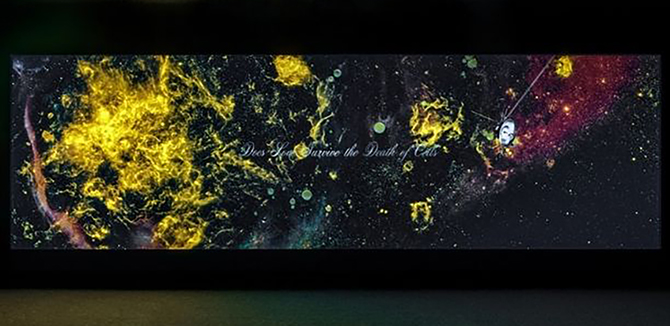The Link Between Art and Science
MBP students attend a Block Museum of Art exhibit featuring the work of artist-at-large Dario Robleto that captures the emotional significance of history’s biggest scientific breakthroughs.

On the surface, artists and scientists have little in common, practicing their crafts using different parts of the brain while working from studios or labs with few similarities.
An exhibit at Northwestern University’s Block Museum of Art aims to show just how easily that gap can be bridged.
The exhibit is called "The Heart’s Knowledge: Science and Empathy in the Art of Dario Robleto.” The works on display are the culmination of Robleto’s five-year engagement as artist-at-large at Northwestern’s McCormick School of Engineering.
The various pieces showcase the similarities between artists and scientists, who, in Robleto’s view, share the common desire to increase the sensitivity of their observations to enhance discovery. This desire is at the heart of scientific advancements through instruments that allow us to see into the farthest reaches of the universe and into the tiniest aspects of the human condition, Robleto said.
The exhibit, which runs through July 9, is of particular interest to leaders and students in Northwestern Engineering's Master of Biotechnology Program (MBP), who share their own commonalities with the artist in their pursuit of understanding and improving life.
“In engineering-focused disciplines, it is easy to get consumed by the minutia and to find yourself wrapped in an equation so deeply that you forget that what you are doing has purpose and meaning,” said Kishan Batcheldor (MBP '24), who attended the exhibit as part of a course called Deconstructing Synthetic Biology. “Seeing an artist’s take on scientific discoveries or questions is a good way to remind yourself that there are emotional and societal implications behind the work.”
Robleto’s takes are displayed in a variety of mediums and rely on actual scientific breakthroughs for their inspiration. They showcase his view on the emotional significance of these advancements.
There is a 3D-printed brass-plated stainless-steel rendering of the earliest waveform recordings of inhalation and blood flowing from the heart, as well as an exhibit featuring fossilized whale ear bones as old as 10 million years old alongside butterfly antennae made from stretched and pulled audiotape recordings of Bob Dylan’s “Desolation Row.”
An immersive 4K video with 5.1 surround sound called “The Boundary of Life is Quietly Crossed” is described as “a meditation on the cosmic limits of perception.”
All the exhibits are meant to give the viewer pause to think about the implications of scientific advancement. Robleto's work, combined with the Deconstructing Synthetic Biology course, had that effect on Batcheldor.
“The class has a good crossover with Dario’s exhibit because my biggest takeaways from the class were that in synthetic biology, scientists focus highly on the tools that make a technology work, largely at the molecular scale,” he said. “How do we often forget that this technology can have a larger impact on society? We put things into boxes for simplicity, but it is good to think about how your technology impacts others.”

